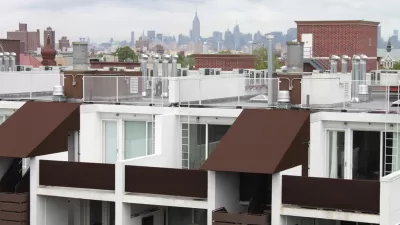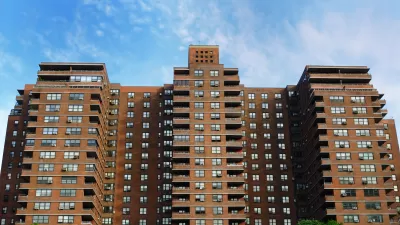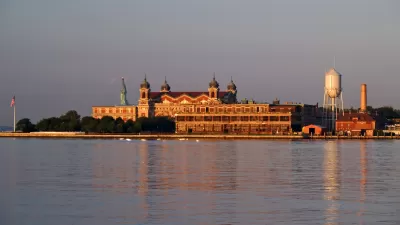With a surging homeless population, the city's cluster site program incentivizes slumlords and reduces the supply of affordable housing.

The cluster-site program, an emergency housing program for homeless New Yorkers, has been criticized as a dysfunctional shelter system, yet the 83-unit building at Clarkson Avenue, in the middle of a gentrifying Brooklyn neighborhood, represents "one of the most complex and intractable challenges confronting" New York City Mayor Bill DeBlasio, writes Vivan Yee for the New York Times.
The program, which pays for homeless people to live temporarily in privately owned buildings, began in 2000, when the homeless population was overwhelming city shelters. But with the city paying over $2,500 per month per family, the Clarkson Avenue building featured in Yee's story highlights the inefficiencies of a system wherein landlords stand to gain more from sheltering homeless people than by providing affordable housing for Section 8 voucher tenants and other low-income renters.
"Critics of the program, including advocates for homeless people, community leaders and elected officials, denounced it as a stopgap that papered over one problem only to worsen another, pushing low-income residents out of their homes and removing otherwise affordable apartments from circulation," reports Yee.
The program was supposed to be temporary, but the number of homeless people living in cluster-site buildings has steadily increased. The money designated to the program is also supposed to provide social services, including building security and employment assistance. However, conditions have deteriorated in these buildings. In one Ditmas Park building, "people loitered in the common areas, openly using drugs. Cockroaches clustered in the light fixture and refrigerator. Doors and windows were broken. The bathroom was moldy and pocked with rodent holes. There was no stove."
FULL STORY: Homeless Families Endure Roaches, Mice and Failed Promises

Alabama: Trump Terminates Settlements for Black Communities Harmed By Raw Sewage
Trump deemed the landmark civil rights agreement “illegal DEI and environmental justice policy.”

Study: Maui’s Plan to Convert Vacation Rentals to Long-Term Housing Could Cause Nearly $1 Billion Economic Loss
The plan would reduce visitor accommodation by 25% resulting in 1,900 jobs lost.

Planetizen Federal Action Tracker
A weekly monitor of how Trump’s orders and actions are impacting planners and planning in America.

Waymo Gets Permission to Map SF’s Market Street
If allowed to operate on the traffic-restricted street, Waymo’s autonomous taxis would have a leg up over ride-hailing competitors — and counter the city’s efforts to grow bike and pedestrian on the thoroughfare.

Parklet Symposium Highlights the Success of Shared Spaces
Parklets got a boost during the Covid-19 pandemic, when the concept was translated to outdoor dining programs that offered restaurants a lifeline during the shutdown.

Federal Homelessness Agency Places Entire Staff on Leave
The U.S. Interagency Council on Homelessness is the only federal agency dedicated to preventing and ending homelessness.
Urban Design for Planners 1: Software Tools
This six-course series explores essential urban design concepts using open source software and equips planners with the tools they need to participate fully in the urban design process.
Planning for Universal Design
Learn the tools for implementing Universal Design in planning regulations.
Caltrans
Smith Gee Studio
Institute for Housing and Urban Development Studies (IHS)
City of Grandview
Harvard GSD Executive Education
Toledo-Lucas County Plan Commissions
Salt Lake City
NYU Wagner Graduate School of Public Service





























